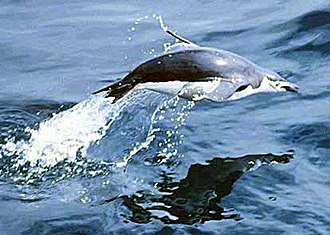Biomechanics




Biomechanics is the study of the structure and function of biological systems by means of the methods of Mechanics. Biomechanics is a multidisciplinary field that combines principles from physics, engineering, and biology to analyze the mechanical aspects of living organisms. This field encompasses a wide range of topics, from the movement of individual cells to the mechanics of human movement.
Overview[edit]
Biomechanics applies the principles of mechanics to understand how the complex biological systems work, focusing on the forces exerted by muscles and gravity on the skeletal structure. It involves the analysis of statics, dynamics, kinematics, and kinetics to study the mechanical functions of living organisms. The applications of biomechanics include improving the performance of athletes, designing prosthetic limbs, understanding the mechanics behind musculoskeletal disorders, and creating more efficient rehabilitation methods.
History[edit]
The history of biomechanics dates back to ancient civilizations, but it was not until the Renaissance period that significant progress was made. Pioneers like Leonardo da Vinci and Galileo Galilei laid the groundwork for modern biomechanics with their studies on human anatomy and motion. In the 19th and 20th centuries, the field expanded with contributions from scientists such as Étienne-Jules Marey and Julius Wolff, who introduced the concepts of motion analysis and the Wolff's Law, respectively.
Subfields[edit]
Biomechanics is divided into several subfields, each focusing on different aspects of biological and mechanical integration:
- Sports Biomechanics: Analyzes sports activities to improve performance and reduce injury risks.
- Comparative Biomechanics: Studies the mechanics of non-human organisms to understand the evolution of mechanical strategies in nature.
- Computational Biomechanics: Uses computer simulations to study the mechanical behavior of biological systems.
- Clinical Biomechanics: Applies biomechanical principles for the diagnosis and treatment of patients.
- Cell Biomechanics: Focuses on the mechanical aspects of cellular functions and structures.
Applications[edit]
The applications of biomechanics are vast and impact several fields, including:
- Medicine: Designing prosthetics, understanding the mechanics of injury, and developing rehabilitation techniques.
- Sports: Enhancing athlete performance and designing sports equipment.
- Biology: Understanding the mechanical principles behind animal movement and plant growth.
- Ergonomics: Designing workplaces and products that improve user interaction and reduce injury risks.
Future Directions[edit]
The future of biomechanics lies in the integration of advanced technologies such as 3D printing, artificial intelligence, and nanotechnology to develop more sophisticated models of biological systems. This will enable researchers to tackle complex biological problems, from understanding the mechanics of cancer cell migration to designing more efficient and adaptive prosthetic limbs.
Ad. Transform your life with W8MD's Budget GLP-1 injections from $75


W8MD offers a medical weight loss program to lose weight in Philadelphia. Our physician-supervised medical weight loss provides:
- Weight loss injections in NYC (generic and brand names):
- Zepbound / Mounjaro, Wegovy / Ozempic, Saxenda
- Most insurances accepted or discounted self-pay rates. We will obtain insurance prior authorizations if needed.
- Generic GLP1 weight loss injections from $75 for the starting dose.
- Also offer prescription weight loss medications including Phentermine, Qsymia, Diethylpropion, Contrave etc.
NYC weight loss doctor appointmentsNYC weight loss doctor appointments
Start your NYC weight loss journey today at our NYC medical weight loss and Philadelphia medical weight loss clinics.
- Call 718-946-5500 to lose weight in NYC or for medical weight loss in Philadelphia 215-676-2334.
- Tags:NYC medical weight loss, Philadelphia lose weight Zepbound NYC, Budget GLP1 weight loss injections, Wegovy Philadelphia, Wegovy NYC, Philadelphia medical weight loss, Brookly weight loss and Wegovy NYC
|
WikiMD's Wellness Encyclopedia |
| Let Food Be Thy Medicine Medicine Thy Food - Hippocrates |
Medical Disclaimer: WikiMD is not a substitute for professional medical advice. The information on WikiMD is provided as an information resource only, may be incorrect, outdated or misleading, and is not to be used or relied on for any diagnostic or treatment purposes. Please consult your health care provider before making any healthcare decisions or for guidance about a specific medical condition. WikiMD expressly disclaims responsibility, and shall have no liability, for any damages, loss, injury, or liability whatsoever suffered as a result of your reliance on the information contained in this site. By visiting this site you agree to the foregoing terms and conditions, which may from time to time be changed or supplemented by WikiMD. If you do not agree to the foregoing terms and conditions, you should not enter or use this site. See full disclaimer.
Credits:Most images are courtesy of Wikimedia commons, and templates, categories Wikipedia, licensed under CC BY SA or similar.
Translate this page: - East Asian
中文,
日本,
한국어,
South Asian
हिन्दी,
தமிழ்,
తెలుగు,
Urdu,
ಕನ್ನಡ,
Southeast Asian
Indonesian,
Vietnamese,
Thai,
မြန်မာဘာသာ,
বাংলা
European
español,
Deutsch,
français,
Greek,
português do Brasil,
polski,
română,
русский,
Nederlands,
norsk,
svenska,
suomi,
Italian
Middle Eastern & African
عربى,
Turkish,
Persian,
Hebrew,
Afrikaans,
isiZulu,
Kiswahili,
Other
Bulgarian,
Hungarian,
Czech,
Swedish,
മലയാളം,
मराठी,
ਪੰਜਾਬੀ,
ગુજરાતી,
Portuguese,
Ukrainian
